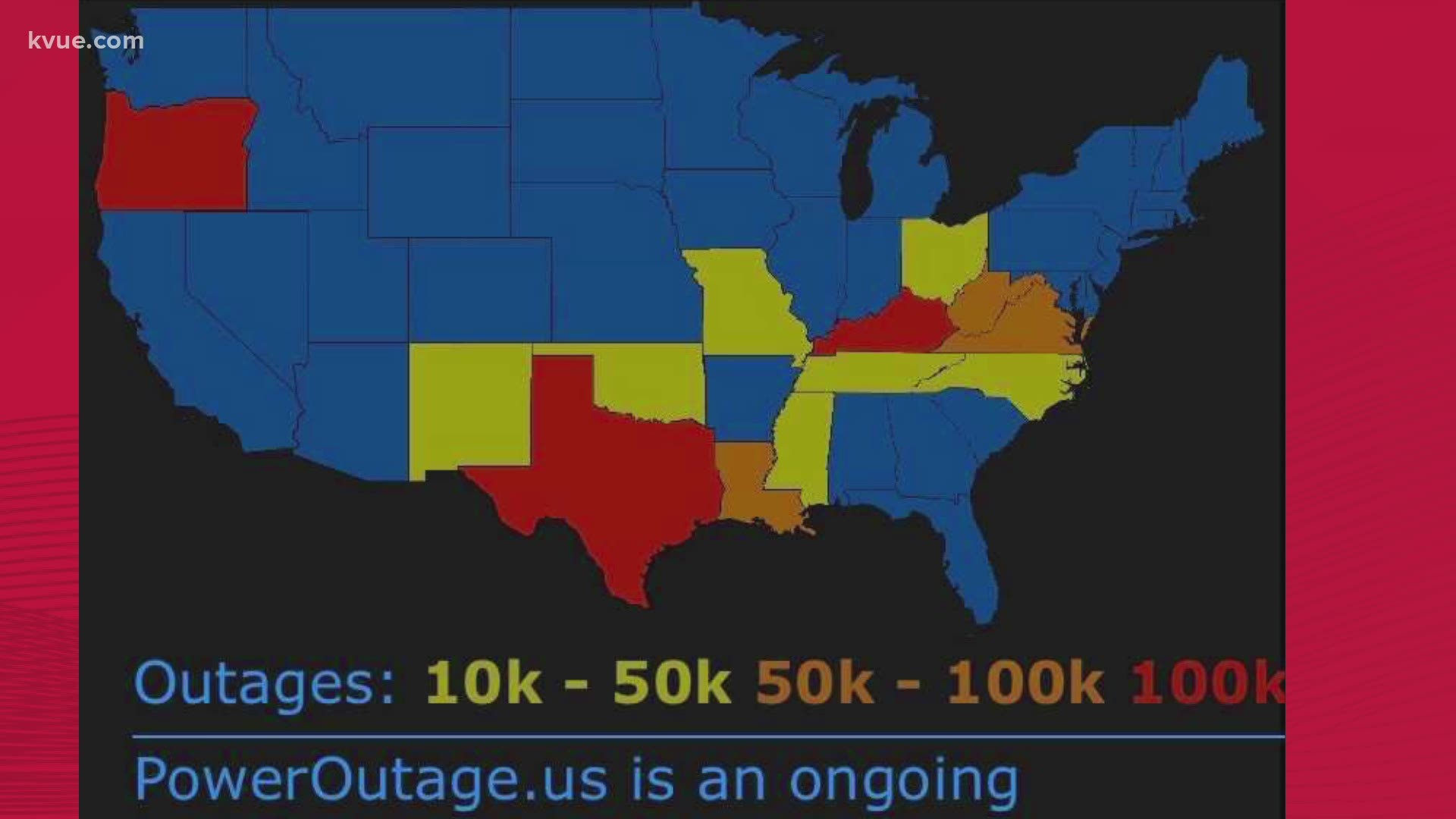Texas-New Mexico Power Outage: Texas New Mexico Power Outage

Texas new mexico power outage – The recent power outage in Texas and New Mexico has left millions of people without power, and has raised concerns about the reliability of the power grid. The outage was caused by a combination of factors, including weather conditions, infrastructure issues, and human factors.
Weather Conditions, Texas new mexico power outage
The power outage was triggered by a severe winter storm that brought freezing temperatures, snow, and ice to the region. The storm caused power lines to ice over and transformers to fail, leading to widespread power outages.
Infrastructure Issues
The power outage was also exacerbated by infrastructure issues. The power grid in Texas is not designed to handle extreme weather conditions, and the storm caused widespread damage to power lines and other infrastructure.
The recent texas new mexico power outage left thousands of people in the dark and cold. The outage was caused by a combination of factors, including high winds and freezing temperatures. The power outage also caused disruptions to transportation and businesses.
Fortunately, power has now been restored to most areas, but the outage is a reminder of the importance of being prepared for emergencies.
Human Factors
Human factors also played a role in the power outage. The storm caused a surge in demand for electricity, which overwhelmed the power grid. In addition, there were reports of human error at some power plants, which contributed to the outage.
Impacts of the Outage
The power outage has had a significant impact on individuals, businesses, and the economy. Millions of people have been left without power, and many have lost food and other essential supplies. Businesses have been forced to close, and the economy has been disrupted.
The recent power outage in Texas and New Mexico has left many residents without power for days. While the cause of the outage is still under investigation, it has been a major inconvenience for those affected. However, it’s important to remember that even in the midst of adversity, there are still moments of joy to be found.
Like the recent shark attack in Texas on July 4th, which brought the community together in a shared experience of excitement and fear. As we work to restore power to the affected areas, let’s not forget the importance of finding joy in the little things.
Infrastructure Assessment and Recovery Efforts
In the aftermath of the Texas-New Mexico power outage, extensive damage has been inflicted upon the power infrastructure. Transmission lines, substations, and power plants have been severely compromised, leading to widespread power outages.
Recovery efforts are currently underway, with utility crews working diligently to assess the extent of the damage and initiate repairs. Damage assessment teams are conducting thorough inspections of the affected infrastructure to determine the nature and severity of the damage. Repair crews are working around the clock to restore power to affected areas, prioritizing critical infrastructure and vulnerable populations.
Restoration Timelines
The expected duration of the outage varies depending on the severity of the damage in each affected area. In some areas, power has already been restored, while in others, it may take several days or even weeks before full restoration is achieved. Utility companies are providing regular updates on the progress of restoration efforts and estimated restoration timelines for specific areas.
Lessons Learned and Future Preparedness

The Texas-New Mexico power outage exposed vulnerabilities in the electrical grid and highlighted the need for improved infrastructure and emergency response mechanisms. Here are key lessons learned and recommendations for enhancing future preparedness:
Grid Resilience
- Investing in grid infrastructure, including transmission lines, substations, and generation facilities, to enhance reliability and resilience.
- Implementing smart grid technologies, such as advanced metering infrastructure (AMI) and distributed energy resources (DERs), to improve situational awareness and grid stability.
- Developing microgrids and distributed generation systems to provide localized power during outages.
Early Warning Systems
- Establishing early warning systems to detect potential grid disturbances and provide timely alerts to utilities and consumers.
- Implementing advanced weather forecasting and monitoring systems to predict and mitigate the impact of severe weather events.
- Developing protocols for early communication and coordination among stakeholders, including utilities, government agencies, and emergency responders.
Emergency Preparedness Plans
- Developing comprehensive emergency preparedness plans that Artikel roles and responsibilities for all stakeholders involved in outage response.
- Conducting regular drills and exercises to test and refine emergency response procedures.
- Ensuring adequate resources, including personnel, equipment, and supplies, are available for rapid deployment during outages.
Coordination and Communication
- Establishing clear lines of communication and coordination among utilities, government agencies, and the public during outages.
- Developing a centralized information hub to provide real-time updates and outage restoration timelines.
- Utilizing social media and other communication channels to disseminate information and facilitate public engagement.